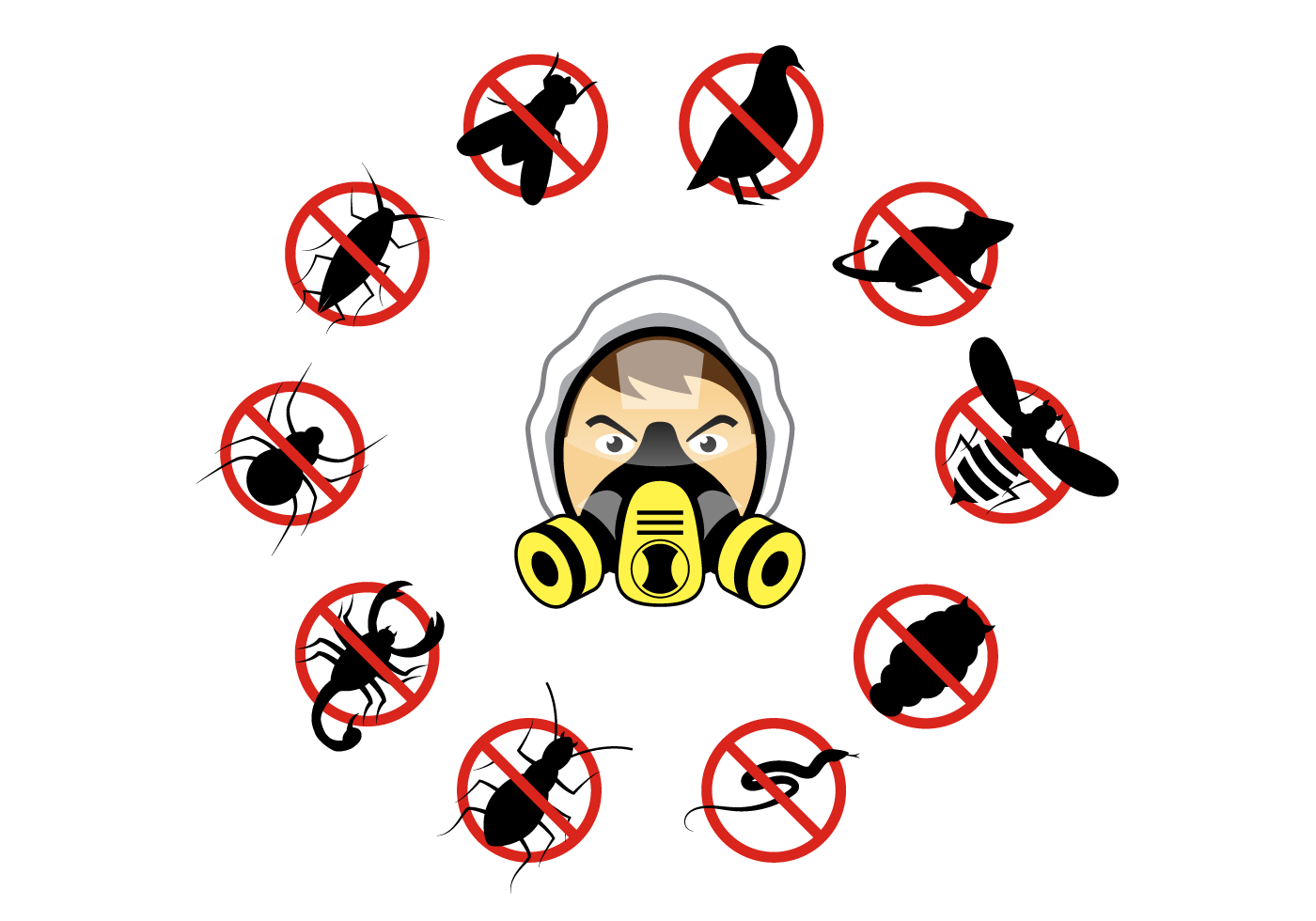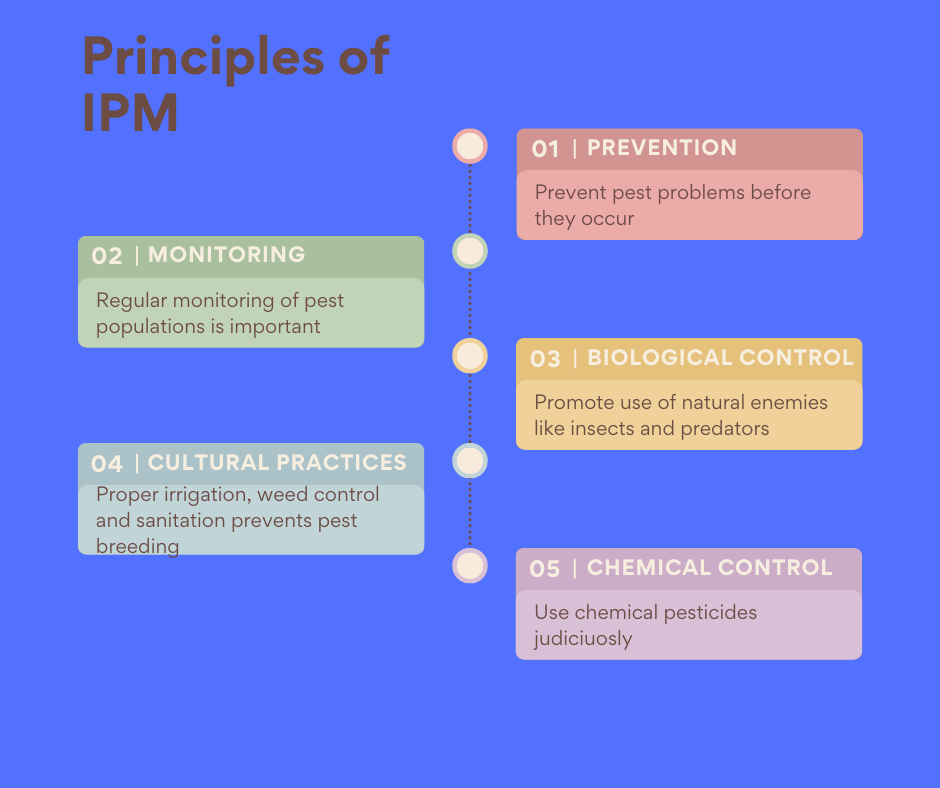Contact: +91 99725 24322 |
Menu
Menu
Quick summary: Discover the power of Integrated Pest Management (IPM) for sustainable agriculture. Learn how IPM practices promote ecological balance, reduce pesticide use, and enhance crop health. Improve sustainability, protect the environment, and achieve long-term success in agricultural practices. e crop health. Read our blog for valuable information and practical tips on IPM for sustainable agriculture.

The global challenges of growing population, food security and climate change continue to put pressure on farmers to ensure healthy, productive and safe crops. Integrated Pest Management (IPM) strategies are an ecosystem-based approach that combines biological control, selection of pest-resistant crop varieties, rotations, habitat changes and pesticide usage.
In principle, Integrated Pest Management for sustainable agriculture is finding the root of the pests problems in any facility and applying corrective and preventive measures to ensure pests elimination. This is achieved by, hygienic design of the facility, cleaning practices, exclusion or controlling access, modifying habitat, behavioral changes, removing infestations physically and applying pesticides where applicable. IPM must be continuous process improved continually by monitoring activities, documentation, employee training and effective communication.
Integrated Pest Management (IPM) is an approach to sustainable agriculture that aims to minimize the use of pesticides while still effectively managing pests. It is a holistic approach that considers the entire ecosystem, including the interactions between crops, pests, natural enemies, and the environment. This essay will discuss the importance of IPM in sustainable agriculture, the strategies used in IPM, and its benefits.
Sustainable agriculture is an important concept in modern farming, as it focuses on meeting the needs of the present without compromising the ability of future generations to meet their own needs. One of the main challenges in sustainable agriculture is managing pests, which can cause significant crop damage and reduce yields. Pesticides have traditionally been used to control pests, but excessive pesticide use can have negative impacts on the environment, human health, and the economy. IPM offers an alternative approach that seeks to reduce the amount of pesticides used in agriculture.
The primary goal of IPM is to reduce the amount of pesticides used in agriculture, while still effectively managing pests. To achieve this goal, IPM uses a combination of strategies to control pests, including cultural control, biological control, chemical control, and monitoring and decision-making.
Cultural control involves modifying the crop environment to make it less favorable for pests. This can be done by using crop rotation, planting resistant varieties of crops, and optimizing irrigation and fertilization practices. By creating a less favorable environment for pests, the likelihood of pest infestations is reduced.
Biological control involves using natural enemies of pests, such as predators, parasitoids, and pathogens, to control their populations. This can be done by promoting natural enemies through the use of flowering plants, releasing beneficial insects, and providing habitat for natural enemies. Biological control is an effective and sustainable way to control pests, as it does not involve the use of pesticides.
Chemical control involves the judicious use of pesticides when other control methods are not sufficient. In IPM, pesticides are only used when necessary and in the least toxic form possible. This reduces the negative impact of pesticides on the environment, human health, and the economy.
Monitoring and decision-making involves regularly monitoring crops and pest populations to determine when and if pest control is necessary. This can be done through the use of traps, scouting, and other monitoring techniques. Once a decision has been made to control pests, the most appropriate control method is chosen based on the type and severity of the pest problem.
Overall, IPM is an effective and sustainable approach to pest management in agriculture. It takes into account the complex interactions between crops, pests, and the environment, and seeks to minimize the negative impacts of pest control while still maintaining yields and protecting the environment. By using a combination of strategies, including cultural control, biological control, chemical control, and monitoring and decision-making, IPM offers an alternative to traditional pesticide-based pest control methods. This makes IPM an important component of sustainable agriculture, as it helps to ensure that the needs of the present are met without compromising the ability of future generations to meet their own needs.
There are several reasons why following Integrated Pest Management (IPM) is beneficial for agriculture and the environment. Here are some of the most important reasons:
Overall, following IPM practices can provide a range of benefits, including improved pest control, protection of beneficial organisms, reduced environmental impact, and cost-effectiveness. By implementing IPM, growers can maintain a healthy and sustainable agriculture system that benefits both people and the environment.
To have a successful integrated pest management (IPM) program there should be certain programs to follow. A goal to have is suppressing a pest population which involves keeping a pest population below a certain level.
The program should have the following:

IPM is a system of managing pests which is designed to be sustainable. This provides the most cost effective, environmentally sound and socially acceptable method of managing diseases, insects, weeds and other pests in agriculture. There are biological methods such as growing plants that are resistant to pests.
The key elements are:

By implementing these key elements, growers can develop a successful IPM program that reduces reliance on pesticides, protects the environment, and maintains a healthy balance between pests and beneficial organisms.
TraceX’s Farm Management Solutions offers a comprehensive Package of Practices that includes integrated pest management strategies. With a focus on sustainable agriculture, TraceX provides farmers and organizations with a digital platform to monitor and track sustainable practices related to pest and weed management. This enables reduced reliance on chemical inputs and promotes a healthy and resilient farming ecosystem.
Integrated Pest Management (IPM) is a critical component of sustainable agriculture. By using a combination of methods to control pests, IPM reduces the reliance on chemical pesticides, protects beneficial organisms, reduces environmental impact, and maintains a healthy ecosystem. The use of IPM practices can also improve pest control and reduce the risk of developing pesticide-resistant pests, while being cost-effective in the long run. Furthermore, by implementing IPM, growers can comply with environmental regulations related to pesticide use and contribute to a sustainable agriculture system.
Overall, the adoption of IPM practices is essential to ensure sustainable agriculture, protect the environment, and maintain a healthy balance between pests and beneficial organisms. With careful planning, implementation, and evaluation, IPM can be an effective tool for growers to manage pest populations while preserving the integrity of the ecosystem.
